- Home
- Stephen King
Danse Macabre Page 10
Danse Macabre Read online
Page 10
There are films of ideas, of course, ranging all the way from Birth of a Nation to Annie Hall. But until a few years ago these were largely the province of foreign filmmakers (the cinema "new wave" that broke in Europe from 1946 until about 1965), and these movies have always been chancy in America, playing at your neighborhood "art house" with subtitles, if they play at all. I think it's easy to misread the success of Woody Allen's later films in this regard. In America's urban areas, his films--and films such as Cousin, Cousine--generate long lines at the box office, and they certainly get what George (Night of the Living Dead, Dawn of the Dead) Romero calls "good ink," but in the sticks--the quad cinema in Davenport, Iowa, or the twin in Portsmouth, New Hampshire--these pictures play a fast week or two and then disappear. It is Burt Reynolds in Smokey and the Bandit that Americans really seem to take to; when Americans go to the films, they seem to want billboards rather than ideas; they want to check their brains at the box office and watch car crashes, custard pies, and monsters on the prowl.
Ironically, it took a foreign director, the Italian Sergio Leone, to somehow frame the archetypal American movie; to define and typify what most American filmgoers seem to want. What Leone did in A Fistful of Dollars, For a Few Dollars More, and most grandiosely in Once Upon a Time in the West cannot even properly be called satire. O.U.A.T.I.T.W. in particular is a huge and wonderfully vulgar overstatement of the already overstated archetypes of American film westerns. In this movie gunshots seem as loud as atomic blasts; close-ups seem to go on for minutes at a stretch, gunfights for hours; and the streets of Leone's peculiar little Western towns all seem as wide as freeways.
So when one asks who or what turned Mary Shelley's wellspoken monster with his education from The Sorrows of Young Werther and Paradise Lost into a pop archetype, the movies are a perfectly good answer. God knows the movies have turned unlikelier subjects into archetypes--scuzzy mountain-men matted with dirt and crawling with lice become proud and handsome symbols of the frontier (Robert Redford in Jeremiah Johnson, or pick the Sunn International picture of your choice), half-witted killers become representatives of American's dying free spirit (Beatty and Dunaway in Bonnie and Clyde), and even incompetency becomes myth and archetype, as in the Blake Edwards/Peter Sellers pictures starring the late Sellers as Inspector Clouseau. Seen in the context of such archetypes, the American movies have created their own Tarot deck, and most of us are familiar with the cards, cards such as the War Hero (Audie Murphy, John Wayne), the Strong and Silent Peace Officer (Gary Cooper, Clint Eastwood), the Whore with the Heart of Gold, the Crazed Hoodlum ("Top of the world, ma!"), the Ineffectual but Amusing Dad, the Can-Do Mom, the Kid from the Gutter Who Is On His Way Up, and a dozen others. That all of these creations are stereotypes developed with varying degrees of cleverness goes without saying, but even in the most inept hands, that reverberation, that cultural echo, seems to be there.
But we're not discussing the War Hero or the Strong, Silent Peace Officer here; we are discussing that ever-popular archetype, the Thing Without a Name. For surely if any novel spans the entire period of book-into-film-into-myth, Frankenstein is that book. It was the subject of one of the first "story" films ever made, a one-reeler starring Charles Ogle as the creature. Ogle's conception of the monster caused him to tease his hair and to apparently cover his face with partially dried Bisquick. That film was produced by Thomas Edison. The same archetype is on view today as the subject of the CBS television series The Incredible Hulk, which has managed to combine two of the archetypes we are discussing here . . . and to do so with a fair amount of success (The Incredible Hulk can be seen as a Werewolf story as well as a Thing story). Although I have to say that each transformation from David Banner into the Hulk leaves me wondering where the hell the guy's shoes go to and how he gets them back.2
So we begin with the movies--but what has turned Frankenstein into a movie not just once but again and again and again? One possibility is that the storyline, although constantly changed (perverted, one is tempted to say) by the filmmakers who have used (and abused) it, usually contains the wonderful dichotomy that Mary Shelley built into her story: on one hand the horror writer is an agent of the norm, he or she wants us to watch for the mutant, and we feel Victor Frankenstein's horror and disgust at the relentless, charnel creature he has made. But on the other hand, we grasp the fact of the creature's innocence and the author's infatuation with the tabula rasa idea.
The monster strangles Henry Clerval and promises Frankenstein he will "be with him on his wedding night," but the monster is also a creature of childlike pleasure and wonder, who beholds the "radiant form" of the moon rising above the trees; he brings wood to the poor peasant family like a good spirit in the night; he seizes the hand of the old blind man, falls on his knees, and begs him: "Now is the time! Save and protect me! . . . Do not desert me in the hour of trial!" The creature who strangles snotty William is also the creature who saves a little girl from drowning . . . and is rewarded with a charge of buckshot in the ass for his pains.
Mary Shelley is--let us bite the bullet and tell the truth--not a particularly strong writer of emotional prose (which is why students who come to the book with great expectations of a fast, gory read--expectations formed by the movies--usually come away feeling puzzled and let down). She's at her best when Victor and his creation argue the pros and cons of the monster's request for a mate like Harvard debaters--that is to say, she is at her best in the realm of pure ideas. So it's perhaps ironic that the facet of the book which seems to have insured its long attractiveness to the movies is Shelley's splitting of the reader into two people of opposing minds: the reader who wants to stone the mutation and the reader who feels the stones and cries out at the injustice of it.
Even so, no moviemaker has gotten all of this idea; probably James Whale came the closest in his stylish Bride of Frankenstein, where the monster's more existential sorrows (young Werther with bolts through his neck) are boiled down to a more mundane but emotionally powerful specific: Victor Frankenstein goes ahead and makes the female . . . but she doesn't like the original monster. Elsa Lanchester, looking like a latter-day Studio 54 disco queen, screams when he tries to touch her, and we are in perfect sympathy with the monster when he rips the whole rotten laboratory to pieces.
A fellow named Jack Pierce did Boris Karloff's makeup in the original sound version of Frankenstein, creating a face as familiar to most of us (if slightly more ugly) as the uncles and cousins in a family photograph album--the square head, the dead-white, slightly concave brow, the scars, the bolts, the heavy eyelids. Universal Pictures copyrighted Pierce's makeup, and so when Britain's Hammer Films made their series of Frankenstein movies in the late fifties and early sixties, a different concept was used. It is probably not as inspired or as original as the Pierce makeup (in most cases the Hammer Frankenstein bears a closer resemblance to the unfortunate Gary Conway in I Was a Teenage Frankenstein), but the two have one thing in common: although in both cases the monster is horrible to look at, there is also something so sad, so miserable there that our hearts actually go out to the creature even as they are shrinking away from it in fear and disgust.3
As I've said, most directors who have tried their hands at a Frankenstein film (with the exception of those played exclusively for laughs) have sensed this dichotomy and tried to use it. Breathes there a moviegoer with soul so dead who never wished the monster would jump down from that burning windmill and stuff those torches right down the throats of those ignorant slobs so dedicated to ending its life? I doubt if there is such a moviegoer, and if there is, he must be hardhearted indeed. But I don't believe any director has caught the full pathos of the situation, and there is no Frankenstein movie that will bring tears to the eyes as readily as the final reel of King Kong, where the big ape straddles the top of the Empire State Building and tries to fight off those machine-gun-equipped biplanes as if they were the prehistoric birds of his native island. Like Eastwood in Leone's spaghetti westerns, Kong is the arch
etype of the archetype. We see the horror of being a monster in the eyes of Boris Karloff and, later, in those of Christopher Lee; in King Kong it is spread across the ape's entire face, due to the marvelous special effects of Willis O'Brien. The result is almost a cartoon of the friendless, dying outsider. It is one of the great fusions of love and horror, innocence and terror, the emotional reality which Mary Shelley only suggests in her novel. Even so, I suspect she would have understood and agreed with Dino De Laurentiis's remark on the great attraction of that dichotomy. De Laurentiis was speaking of his own forgettable remake of King Kong, but he could have been speaking about the hapless monster itself when he said, "Nobody cry when Jaws die." Well, we don't exactly cry when Frankenstein's monster dies--not the way audiences weep when Kong, that shanghaied hostage of a simpler, more romantic world, topples from his perch atop the Empire State--but we are, perhaps, disgusted at our own sense of relief.
4
Although the gathering which ultimately resulted in Mary Shelley's writing of Frankenstein took place on the shores of Lake Geneva, miles from British soil, it must still qualify as one of the maddest British tea parties of all time. And in a funny way, the gathering may have been responsible not only for Frankenstein, published that same year, but for Dracula as well, a novel written by a man who would not be born for another thirty-one years.
It was June of 1816, and the band of travelers--Percy and Mary Shelley, Lord Byron, and Dr. John Polidori--had been confined to quarters by two weeks of torrential rains. They began a joint reading of German ghost stories from a book called Fantasmagoria, and the gathering began to get decidedly weird. Things really culminated when Percy Shelley threw a kind of fit. Dr. Polidori noted in his diary: "After tea, 12 o'clock, really began to talk ghosts. Lord Byron read some verses of Coleridge's 'Christabel,' [the part about] the witch's breast; when silence ensued, Shelley, suddenly shrieking, and putting his hands to his head, ran out of the room with a candle. [I] Threw water in his face and after gave him ether. He was looking at Mrs. Shelley, and suddenly thought of a woman he had heard of who had eyes instead of nipples; which, taking hold of his mind, horrified him."
Leave it to the English.
An agreement was made that each member of the party would try his or her hand at creating a new ghost story. It was Mary Shelley, whose work as a result of the gathering would alone endure, who had the most trouble in setting to work. She had no ideas at all, and several nights passed before her imagination was fired by a nightmare in which "a pale student of unhallowed arts created the awful phantom of a man." It is the creation scene presented in chapters four and five of her novel (quoted from earlier).
Percy Bysshe Shelley produced a fragment entitled "The Assassins." George Gordon Byron produced an interesting macabre tale titled "The Burial." But it is John Polidori, the good doctor, who is sometimes mentioned as a possible link to Bram Stoker and Dracula. His short story was later expanded to novel length and became a great success. It was called "The Vampyre."
In point of fact, Polidori's novel isn't very good . . . and it bears an uncomfortable resemblance to "The Burial," the short story written by his immeasurably more talented patient, Lord Byron. There is perhaps a breath of plagiarism there. We do know that Byron and Polidori argued violently shortly after the interlude at Lake Geneva, and that their friendship ended. It is not entirely beyond supposition that the similarity between the two tales was the cause. Polidori, who was twenty-one at the time he wrote "The Vampyre," came to an unhappy end. The success of the novel he developed from his story encouraged him to retire from the doctoring profession and to become a full-time writer. He had little success at writing, although he was quite good at piling up gambling debts. When he felt his reputation had become irredeemably impugned, he behaved as we would expect of an English gentleman of the day and shot himself.
Stoker's turn-of-the-century horror novel Dracula bears only a slight resemblance to Polidori's The Vampyre--the field is a narrow one, as we will point out again and again, and exclusive of any willful imitation, the family resemblance is always there--but we can be sure that Stoker was aware of Polidori's story. One believes, after reading Dracula, that Stoker left no stone unturned as he researched the project. Is it so far-fetched to believe that he might have read Polidori's novel, have been excited by the subject matter, and determined to write a better book? I like to believe this might be so, much as I like to believe that Polidori really did crib his idea from Lord Byron. That would make Byron the literary grandfather of the legendary Count, who boasts early on to Jonathan Harker that he drove the Turks from Transylvania . . . and Byron himself died while aiding the Greek insurgents against the Turks in 1824, eight years after the gathering with the Shelleys and Polidori on the shores of Lake Geneva. It was a death of which the Count himself would have greatly approved.
5
All tales of horror can be divided into two groups: those in which the horror results from an act of free and conscious will--a conscious decision to do evil--and those in which the horror is predestinate, coming from outside like a stroke of lightning. The most classic horror tale of this latter type is the Old Testament story of Job, who becomes the human Astro-Turf in a kind of spiritual Superbowl between God and Satan.
The stories of horror which are psychological--those which explore the terrain of the human heart--almost always revolve around the free-will concept; "inside evil" if you will, the sort we have no right laying off on God the Father. This is Victor Frankenstein creating a living being out of spare parts to satisfy his own hubris, and then compounding his sin by refusing to take the responsibility for what he has done. It is Dr. Henry Jekyll, who creates Mr. Hyde essentially out of Victorian hypocrisy--he wants to be able to carouse and party-down without anyone, even the lowliest Whitechapel drab, knowing that he is anything but saintly Dr. Jekyll whose feet are "ever treading the upward path." Perhaps the best tale of inside evil ever written is Poe's "The TellTale Heart," where murder is committed out of pure evil, with no mitigating circumstances whatever to tincture the brew. Poe suggests we will call his narrator mad because we must always believe that such perfect, motiveless evil is mad, for the sake of our own sanity.
Novels and stories of horror which deal with "outside evil" are often harder to take seriously; they are apt to be no more than boys' adventure yarns in disguise, and in the end the nasty invaders from outer space are repelled; or at the last possible instant the Handsome Young Scientist comes up with the gimmick solution . . . as when, in Beginning of the End, Peter Graves creates a sonic gun which draws all the giant grasshoppers into Lake Michigan.
And yet it is the concept of outside evil that is larger, more awesome. Lovecraft grasped this, and it is what makes his stories of stupendous, Cyclopean evil so effective when they are good. Many aren't, but when Lovecraft was on the money--as in "The Dunwich Horror," "The Rats in the Walls," and best of all, "The Colour Out of Space"--his stories packed an incredible wallop. The best of them make us feel the size of the universe we hang suspended in, and suggest shadowy forces that could destroy us all if they so much as grunted in their sleep. After all, what is the paltry inside evil of the A-bomb when compared to Nyarlathotep, the Crawling Chaos, or Shub-Niggurath, the Goat with a Thousand Young?
Bram Stoker's Dracula seems a remarkable achievement to me because it humanizes the outside evil concept; we grasp it in a familiar way Lovecraft never allowed, and we can feel its texture. It is an adventure story, but it never degenerates to the level of Edgar Rice Burroughs or Varney the Vampyre.
Stoker achieves the effect to a large degree by keeping the evil literally outside for most of his long story. The Count is onstage almost constantly during the first four chapters, dueling with Jonathan Harker, pressing him slowly to the wall ("Later there will be kisses for all of you," Harker hears him tell the three weird sisters as he [Harker] lies in a semiswoon) . . . and then he disappears for most of the book's three hundred or so remaining pages.4 It is one of English
literature's most remarkable and engaging tricks, a trompe l'oeil that has rarely been matched. Stoker creates his fearsome, immortal monster much the way a child can create the shadow of a giant rabbit on the wall simply by wiggling his fingers in front of a light.
The Count's evil seems totally predestinate; the fact that he comes to London with its "teeming millions" does not proceed from any mortal being's evil act. Harker's ordeal at Castle Dracula is not the result of any inner sin or weakness; he winds up on the Count's doorstep because his boss asked him to go. Similarly, the death of Lucy Westenra is not a deserved death. Her encounter with Dracula in the Whitby churchyard is the moral equivalent of being struck by lightning while playing golf. There is nothing in her life to justify the end she comes to at the hands of Van Helsing and her fiance, Arthur Holmwood--her heart burst apart by a stake, her head chopped off, her mouth stuffed with garlic.
It is not that Stoker is ignorant of inside evil or the Biblical concept of free will; in Dracula the concept is embodied by that most engaging of maniacs, Mr. Renfield, who also symbolizes the root source of vampirism--cannibalism. Renfield, who is working his way up to the big leagues the hard way (he begins by snacking on flies, progresses to munching on spiders, then to dining on birds), invites the Count into Dr. Seward's madhouse knowing perfectly well what he is doing--but to suggest he is a large enough character to take responsibility for all the terrors that follow is to suggest the absurd. His character, though engaging, is just not strong enough to take that weight. We assume that if Dracula hadn't gotten in by using Renfield, he would have gotten in another way.

 The Stand
The Stand The Shining
The Shining It
It The Dead Zone
The Dead Zone The Dark Tower
The Dark Tower The Gunslinger
The Gunslinger Song of Susannah
Song of Susannah Under the Dome
Under the Dome The Mist
The Mist Revival
Revival Misery
Misery Mile 81
Mile 81 From a Buick 8
From a Buick 8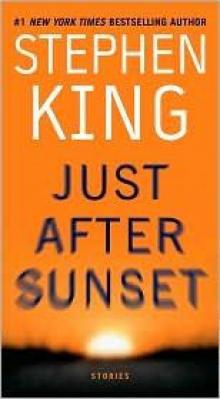 Just After Sunset
Just After Sunset Black House
Black House Doctor Sleep
Doctor Sleep The Drawing of the Three
The Drawing of the Three Wizard and Glass
Wizard and Glass Dolores Claiborne
Dolores Claiborne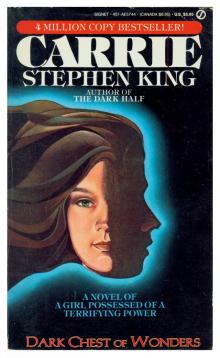 Carrie
Carrie The Little Sisters of Eluria
The Little Sisters of Eluria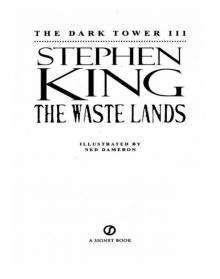 The Waste Lands
The Waste Lands The Green Mile
The Green Mile The Girl Who Loved Tom Gordon
The Girl Who Loved Tom Gordon Cujo
Cujo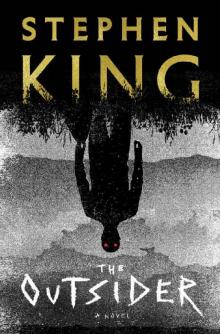 The Outsider_A Novel
The Outsider_A Novel The Tommyknockers
The Tommyknockers Cell
Cell Pet Sematary
Pet Sematary The Talisman
The Talisman Four Past Midnight
Four Past Midnight Different Seasons
Different Seasons Needful Things
Needful Things Nightmares and Dreamscapes
Nightmares and Dreamscapes Christine
Christine The Running Man
The Running Man The Eyes of the Dragon
The Eyes of the Dragon 11/22/63
11/22/63 Firestarter
Firestarter Insomnia
Insomnia Finders Keepers
Finders Keepers Gerald's Game
Gerald's Game The Wind Through the Keyhole
The Wind Through the Keyhole Hearts in Atlantis
Hearts in Atlantis Danse Macabre
Danse Macabre Thinner
Thinner Duma Key
Duma Key The Bachman Books
The Bachman Books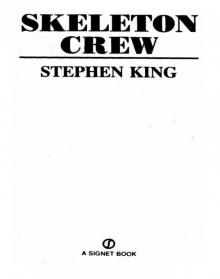 Skeleton Crew
Skeleton Crew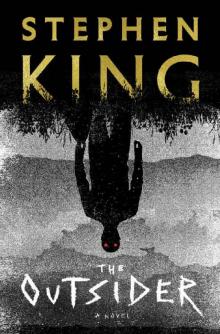 The Outsider-Stephen King
The Outsider-Stephen King Full Dark, No Stars
Full Dark, No Stars Salem's Lot
Salem's Lot Bag of Bones
Bag of Bones Desperation
Desperation End of Watch
End of Watch Wolves of the Calla
Wolves of the Calla Mr. Mercedes
Mr. Mercedes Billy Summers
Billy Summers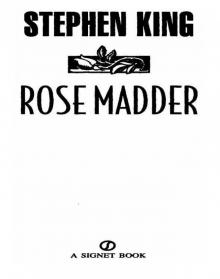 Rose Madder
Rose Madder Later
Later Gunslinger
Gunslinger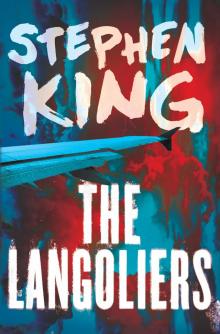 The Langoliers
The Langoliers Joyland
Joyland If It Bleeds
If It Bleeds Apt Pupil (Scribner Edition)
Apt Pupil (Scribner Edition) Flight or Fright
Flight or Fright Everything's Eventual: 14 Dark Tales
Everything's Eventual: 14 Dark Tales Night Shift
Night Shift The Dark Half
The Dark Half On Writing
On Writing The Institute
The Institute A Death
A Death The Man in the Black Suit : 4 Dark Tales
The Man in the Black Suit : 4 Dark Tales Bullet
Bullet The Dark Tower tdt-7
The Dark Tower tdt-7 Chiral Mad 3
Chiral Mad 3 Big Driver
Big Driver Stephen King: The Green Mile
Stephen King: The Green Mile Dolan's Cadillac nad-1
Dolan's Cadillac nad-1 Head Down nad-22
Head Down nad-22 The Doctor's Case
The Doctor's Case Luckey Quarter
Luckey Quarter Rage (richard bachman)
Rage (richard bachman)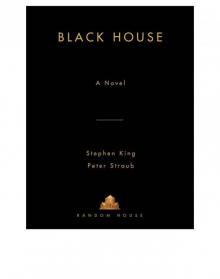 Black House js-2
Black House js-2 The Wind Through the Keyhole (Dark Tower)
The Wind Through the Keyhole (Dark Tower) Duma Key: A Novel
Duma Key: A Novel Dark Tower V, The
Dark Tower V, The Cycle of the Werewolf
Cycle of the Werewolf AUTOPSY ROOM FOUR
AUTOPSY ROOM FOUR Dark Tower VII, The (v. 7)
Dark Tower VII, The (v. 7) Gramma
Gramma Suffer the Little Children
Suffer the Little Children Chinga
Chinga Word Processor of the Gods
Word Processor of the Gods Lisey’sStory
Lisey’sStory Dark Tower V (Prologue)
Dark Tower V (Prologue) The Stand (Original Edition)
The Stand (Original Edition) Rainy Season nad-13
Rainy Season nad-13 Transgressions
Transgressions The Plant
The Plant Under the Dome: A Novel
Under the Dome: A Novel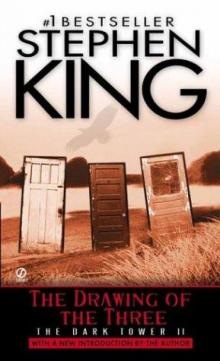 The Dark Tower II: The Drawing of the Three
The Dark Tower II: The Drawing of the Three The End of the Whole Mess:
The End of the Whole Mess: Ur
Ur The Body
The Body Uncollected Stories 2003
Uncollected Stories 2003 Chattery Teeth
Chattery Teeth The Mouse on the Mile
The Mouse on the Mile The Cat from Hell
The Cat from Hell![The Drawing of the Three [The Dark Tower II] Read online](http://i1.bookreadfree.com/i/03/25/the_drawing_of_the_three_the_dark_tower_ii_preview.jpg) The Drawing of the Three [The Dark Tower II]
The Drawing of the Three [The Dark Tower II] Cell: A Novel
Cell: A Novel Uncle Otto's Truck
Uncle Otto's Truck Song of Susannah dt-6
Song of Susannah dt-6 The Dark Tower VII
The Dark Tower VII Head Down
Head Down Sneakers
Sneakers Crouch End
Crouch End Outsider
Outsider End of Watch: A Novel (The Bill Hodges Trilogy Book 3)
End of Watch: A Novel (The Bill Hodges Trilogy Book 3) Revival: A Novel
Revival: A Novel Everything's Eventual skssc-4
Everything's Eventual skssc-4 The Colorado Kid
The Colorado Kid Sleeping Beauties: A Novel
Sleeping Beauties: A Novel The Dark Tower IV Wizard and Glass
The Dark Tower IV Wizard and Glass A Book of Horrors
A Book of Horrors Four Past Midnight - 3 - Secret Window, Secret Garden
Four Past Midnight - 3 - Secret Window, Secret Garden The House on Maple Street
The House on Maple Street Sometimes They Come Back
Sometimes They Come Back Blockade Billy
Blockade Billy Crouch End nad-17
Crouch End nad-17 Lunch at the Gotham Cafe
Lunch at the Gotham Cafe The Waste Lands dt-3
The Waste Lands dt-3 Six Stories
Six Stories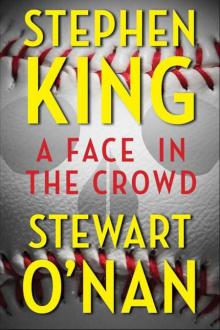 A Face in the Crowd
A Face in the Crowd Case
Case Four Past Midnight - 2 - The Langoliers
Four Past Midnight - 2 - The Langoliers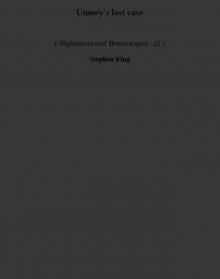 Umney's last case nad-21
Umney's last case nad-21 Survivor Type
Survivor Type Guns (Kindle Single)
Guns (Kindle Single) You Know They Got a Hell of a Band
You Know They Got a Hell of a Band The Jaunt
The Jaunt In A Half World Of Terror
In A Half World Of Terror Gwendy's Button Box
Gwendy's Button Box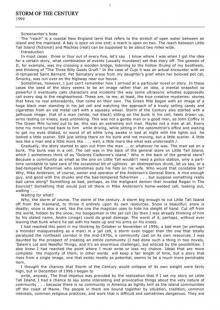 Storm of the Century
Storm of the Century The Jaunt. Travel
The Jaunt. Travel Roadwork
Roadwork Darktower 1 - The Gunslinger
Darktower 1 - The Gunslinger Faithful
Faithful The Regulators
The Regulators A Bedroom in the Wee Hours of the Morning
A Bedroom in the Wee Hours of the Morning Graveyard Shift
Graveyard Shift The Monkey
The Monkey Children of the Corn
Children of the Corn The Reploids
The Reploids 1922
1922 Darktower 2 - The Drawing of the Three
Darktower 2 - The Drawing of the Three Wizard and Glass dt-4
Wizard and Glass dt-4 Riding The Bullet
Riding The Bullet Wolves of the Calla dt-5
Wolves of the Calla dt-5 L.T.'S Theory Of Pets
L.T.'S Theory Of Pets The Langoliers fpm-1
The Langoliers fpm-1 The Two Dead Girls
The Two Dead Girls The Blue Air Compressor
The Blue Air Compressor Everything's Eventual
Everything's Eventual You, Human: An Anthology of Dark Science Fiction
You, Human: An Anthology of Dark Science Fiction The Night of The Tiger
The Night of The Tiger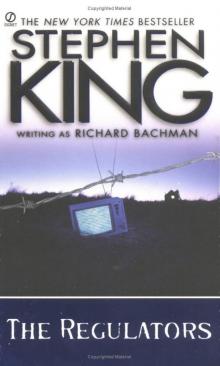 The Regulators (richard bachman)
The Regulators (richard bachman)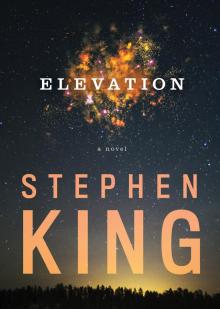 Elevation
Elevation The Road Virus Heads North
The Road Virus Heads North Good Marriage
Good Marriage Four Past Midnight - 5 - The Library Policeman
Four Past Midnight - 5 - The Library Policeman Grey Matter
Grey Matter Herman Wouk Is Still Alive
Herman Wouk Is Still Alive In the Tall Grass
In the Tall Grass Six Scary Stories
Six Scary Stories Foreward
Foreward The Crate
The Crate The wind through the keyhole adt-8
The wind through the keyhole adt-8 King, Stephen - Battleground
King, Stephen - Battleground The Wedding Gig
The Wedding Gig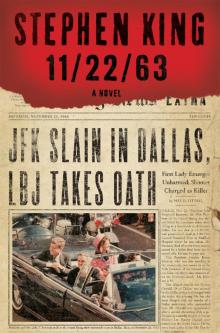 11/22/63: A Novel
11/22/63: A Novel The Long Walk
The Long Walk